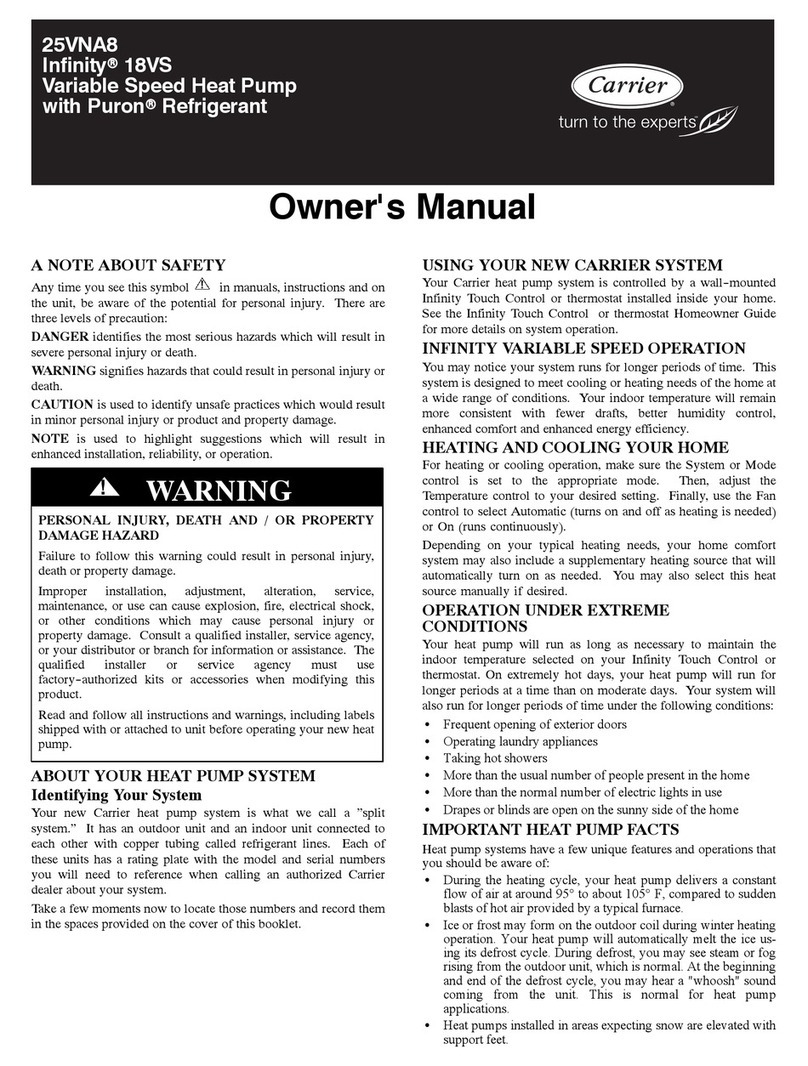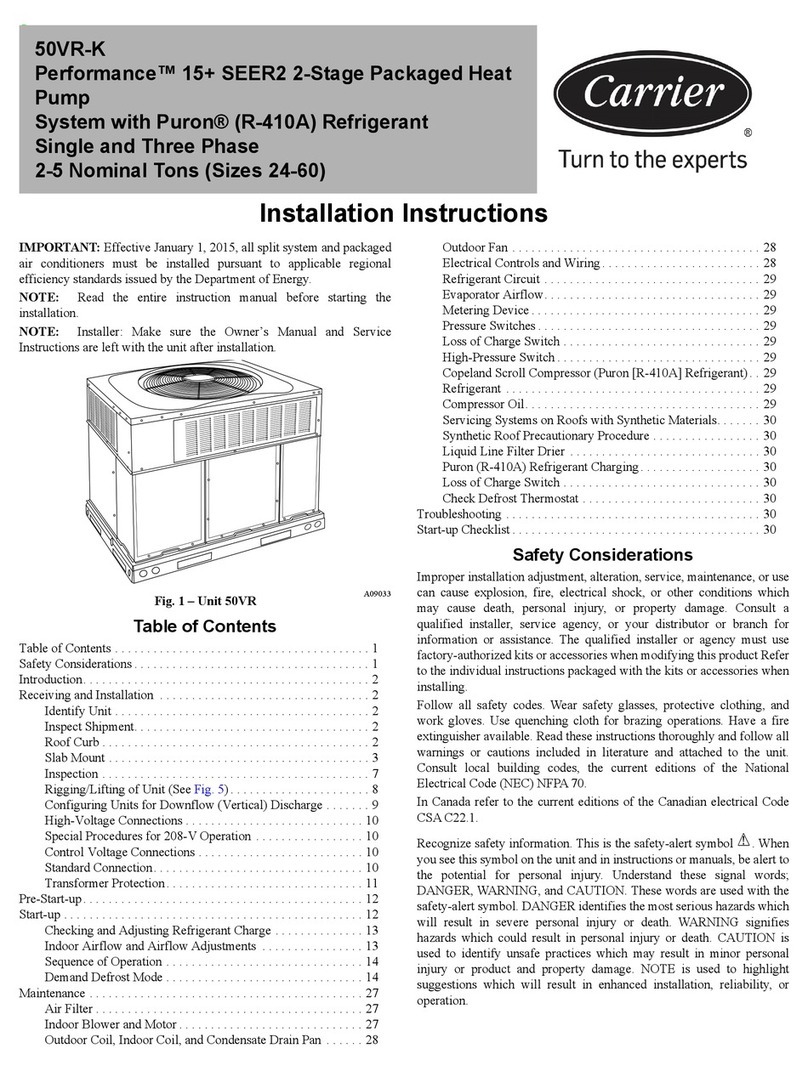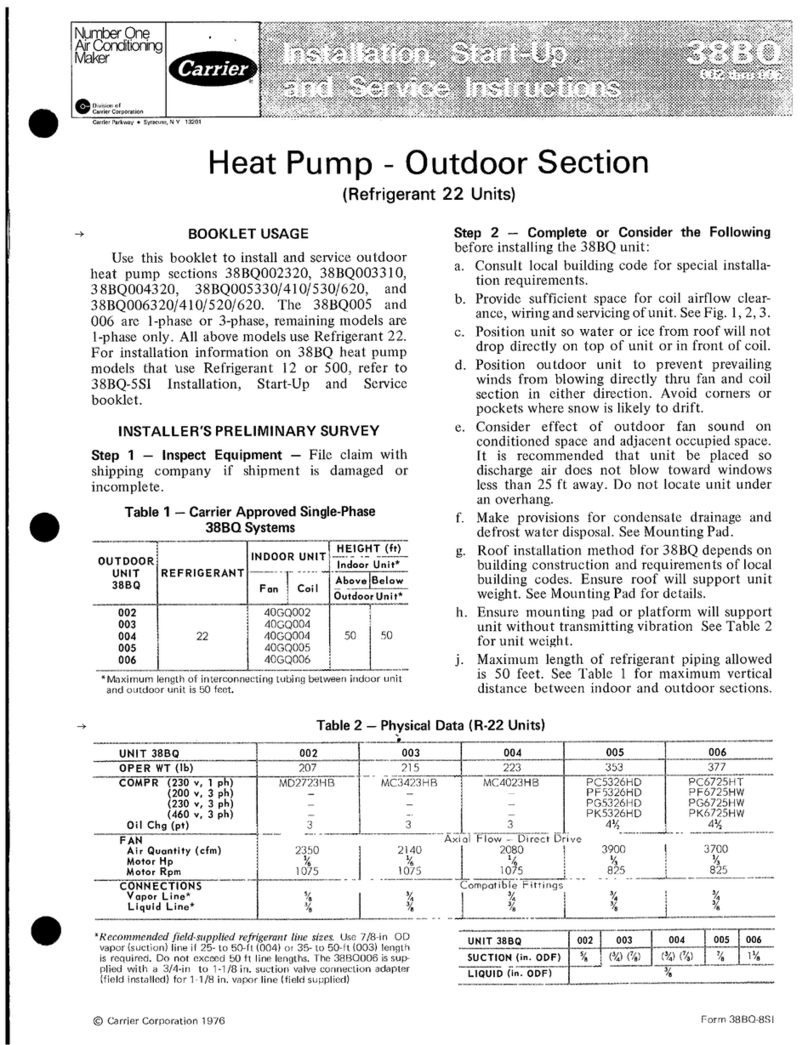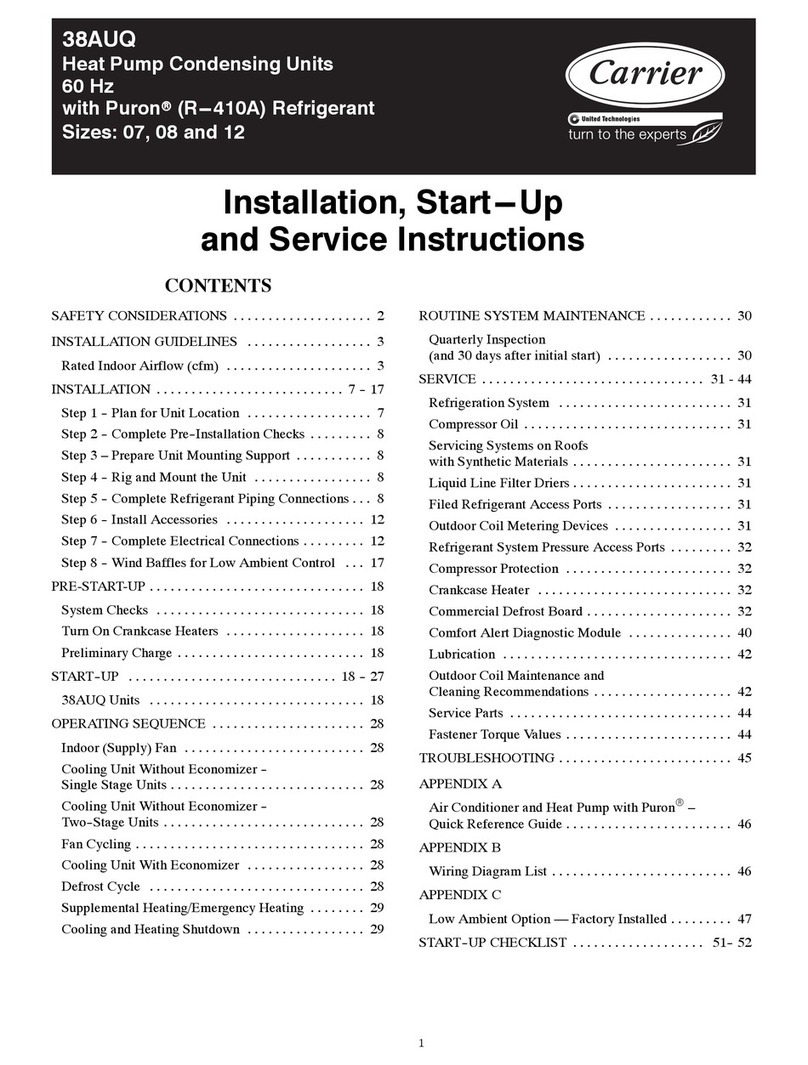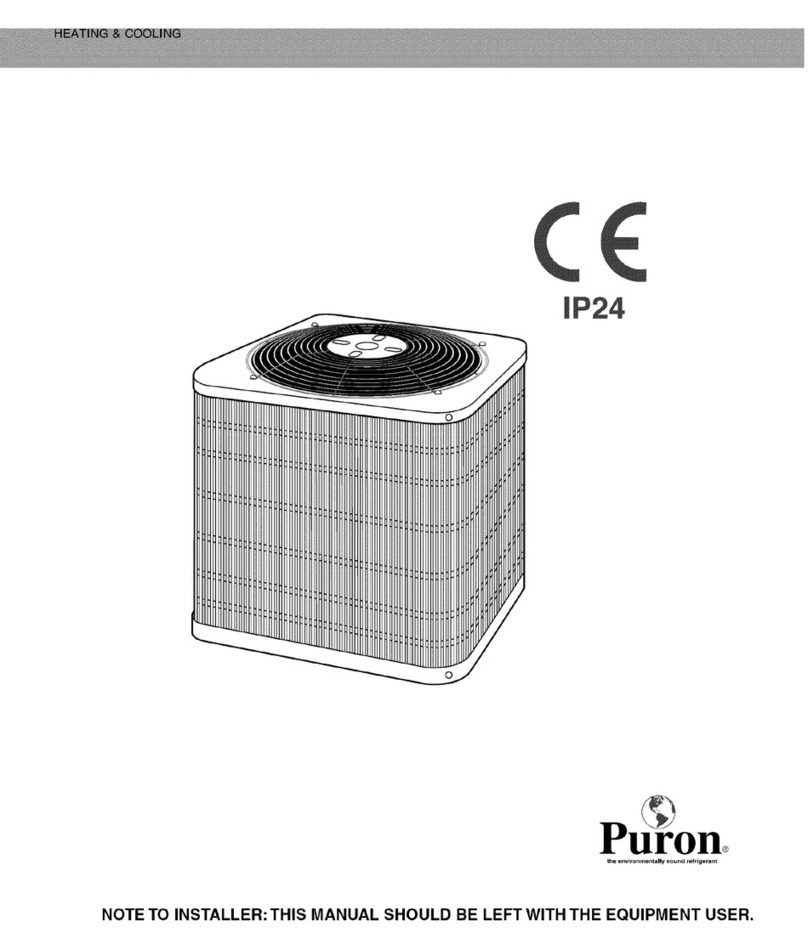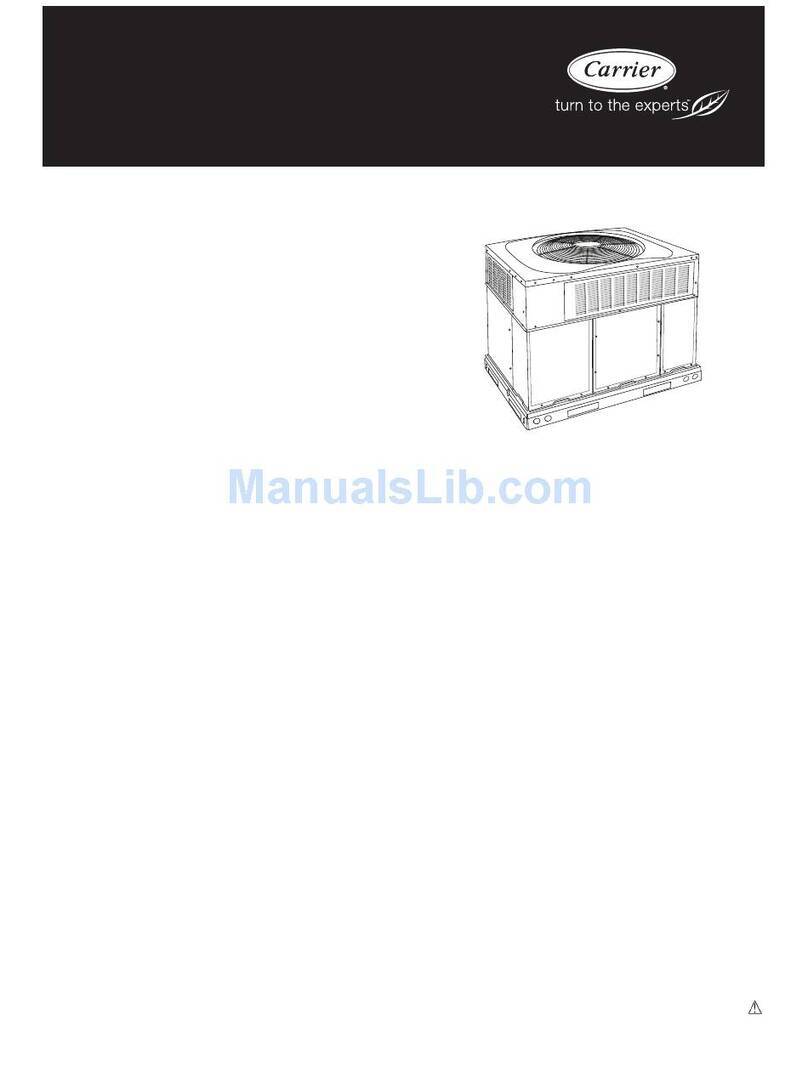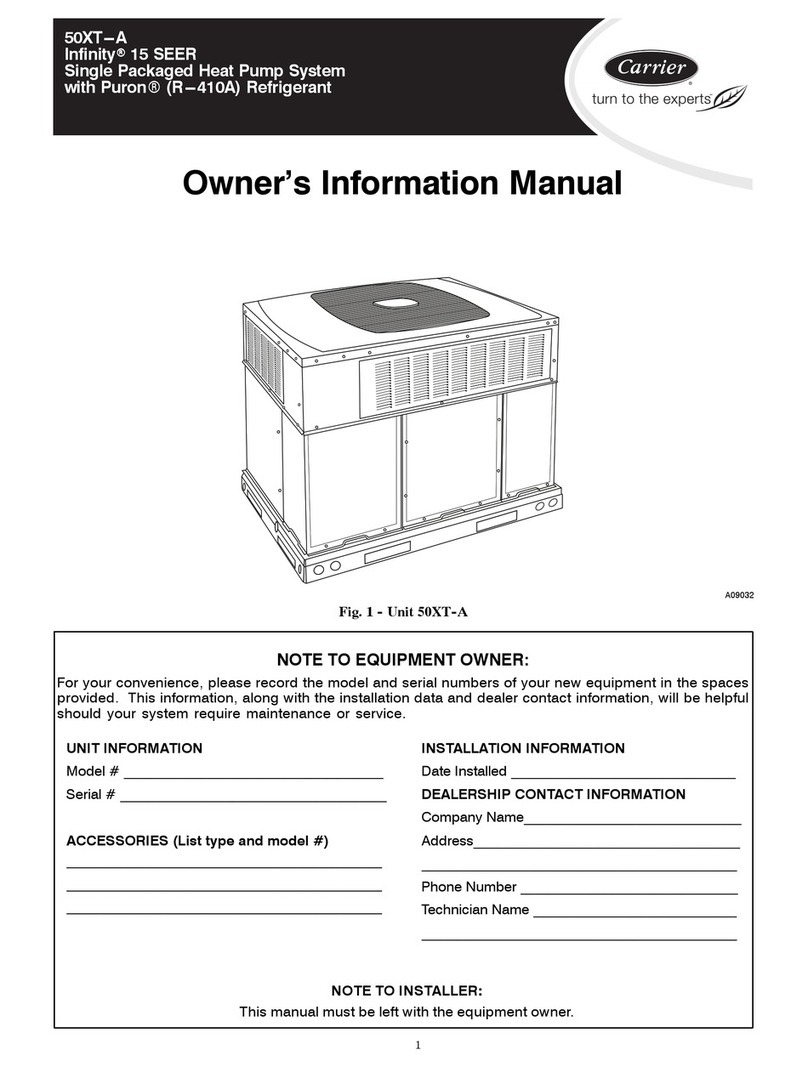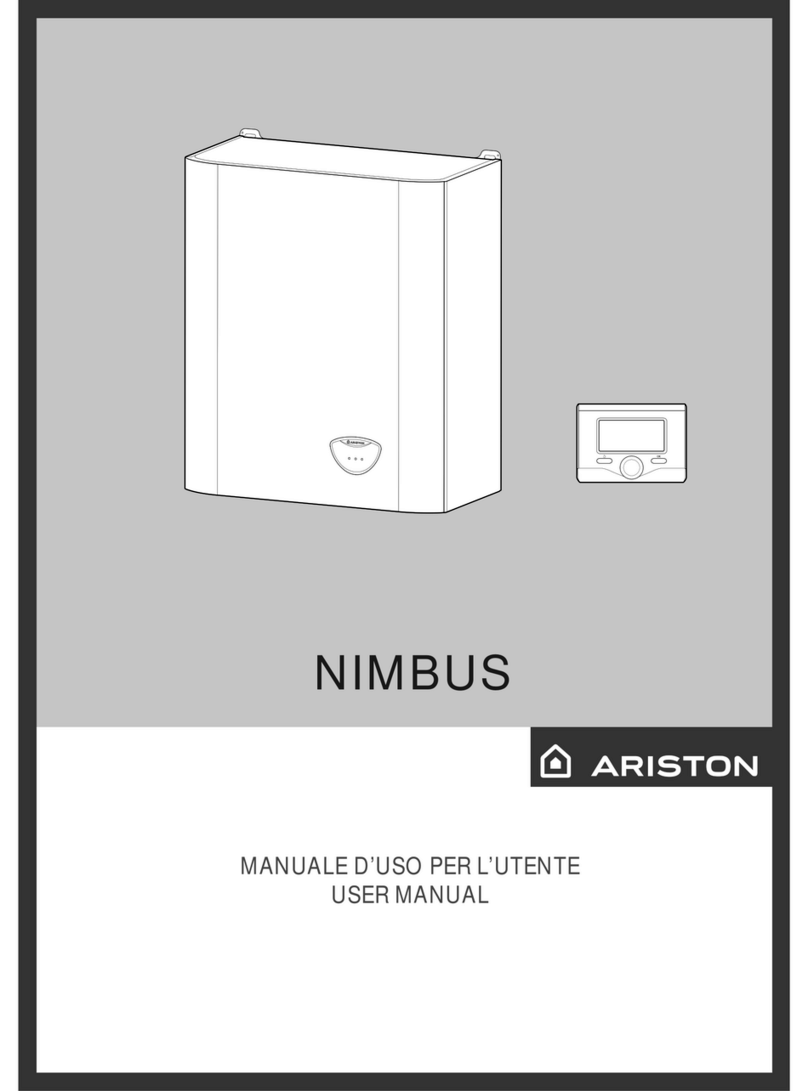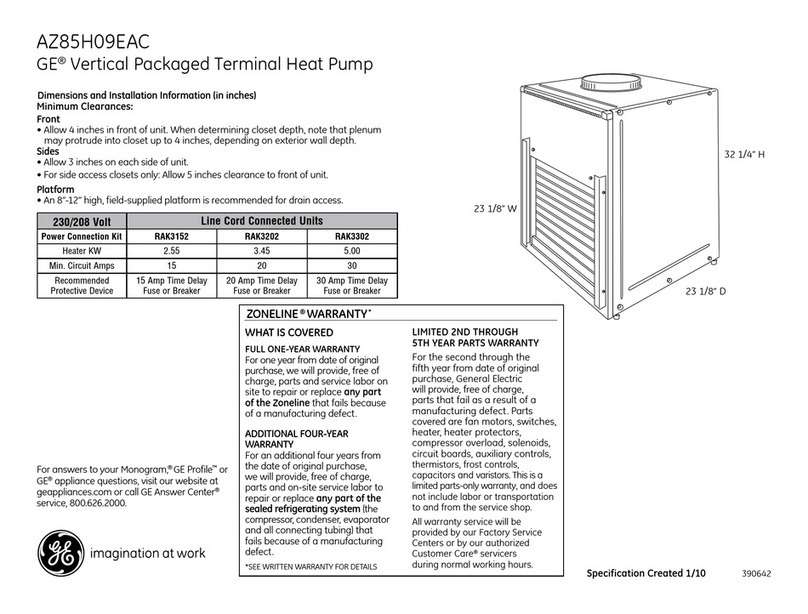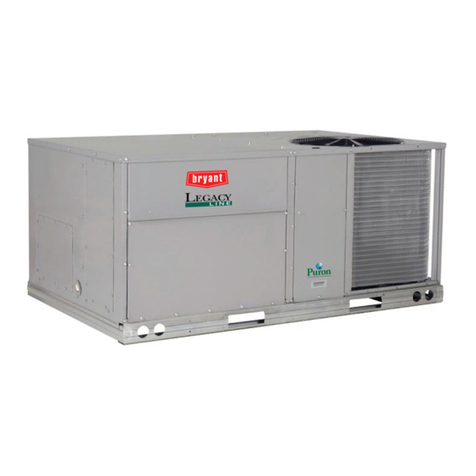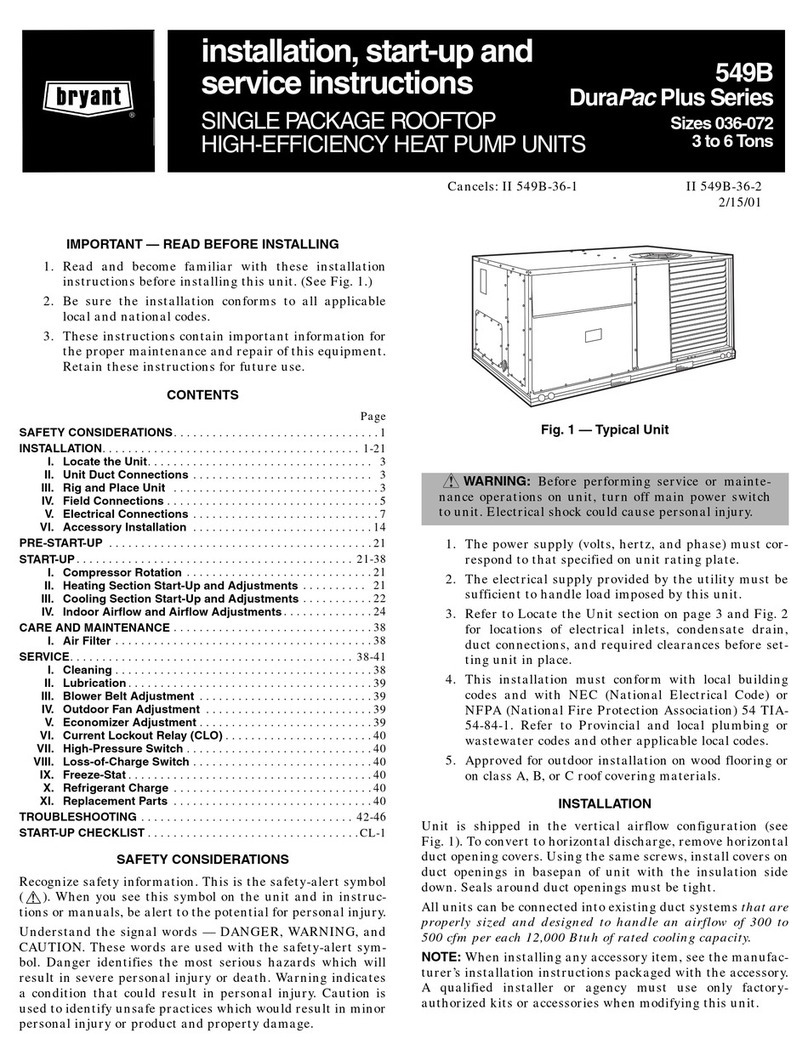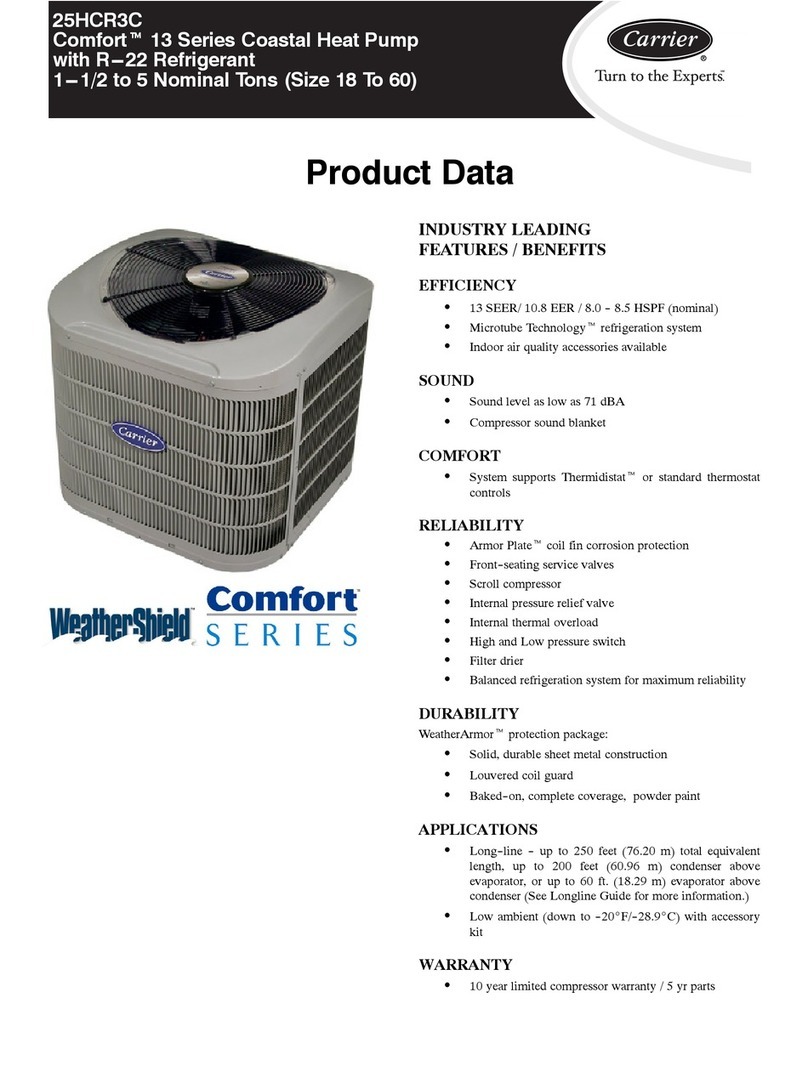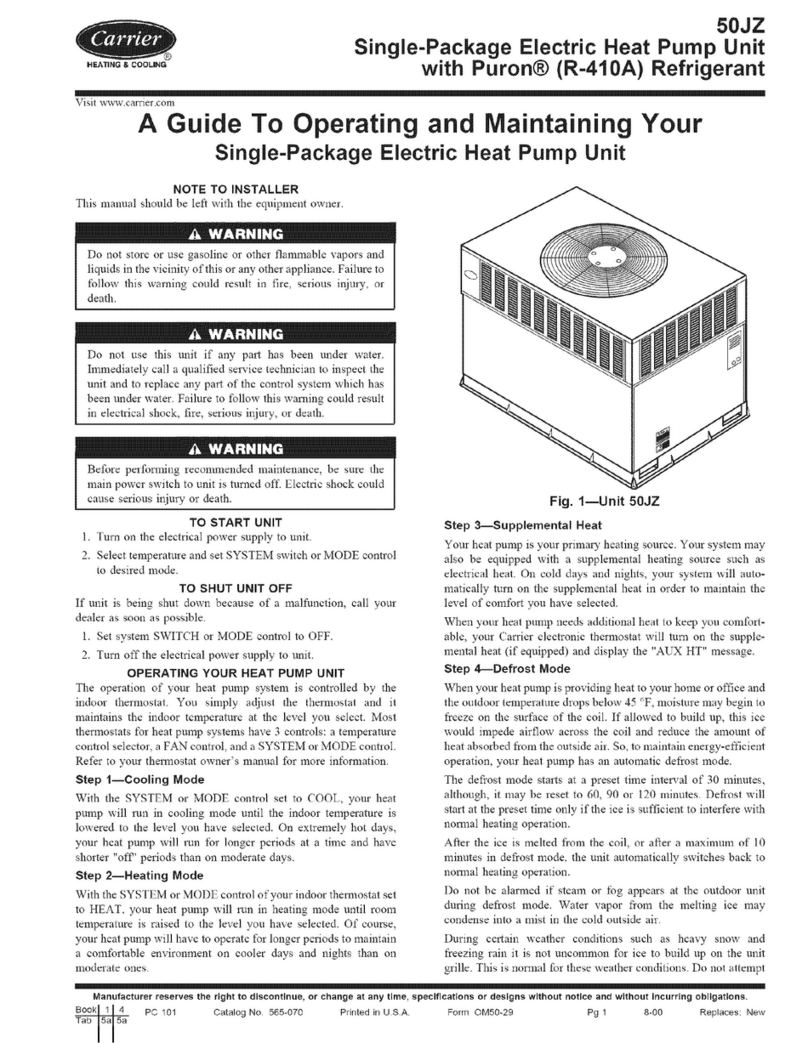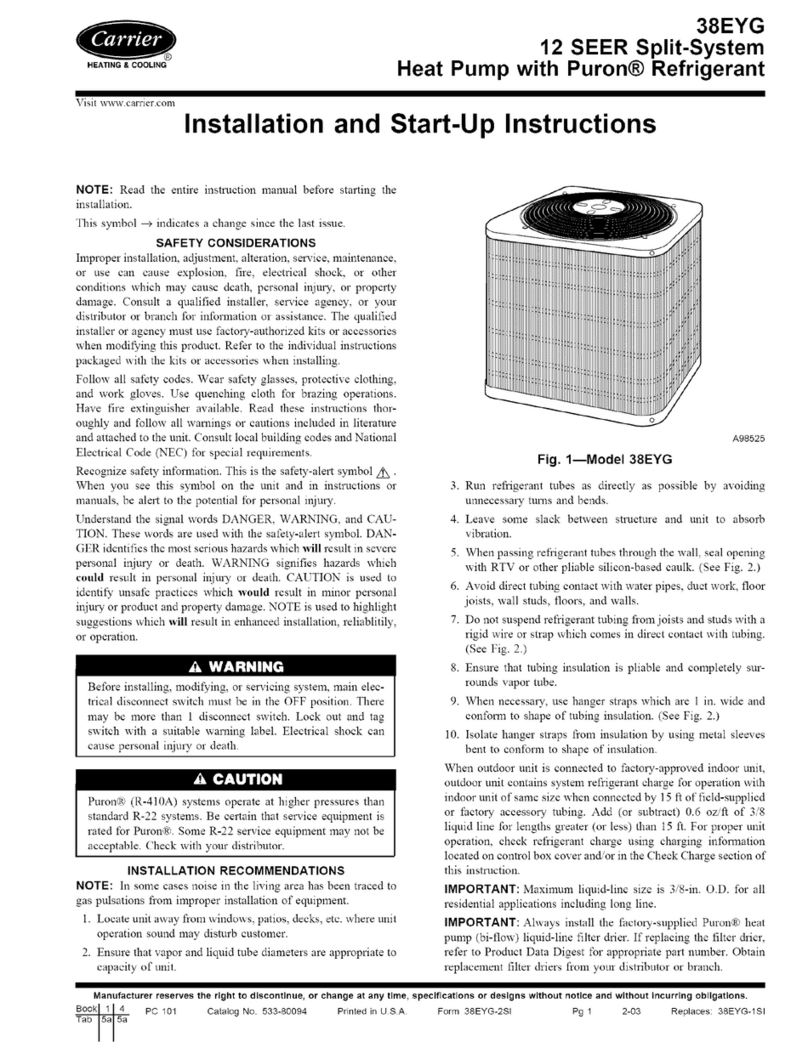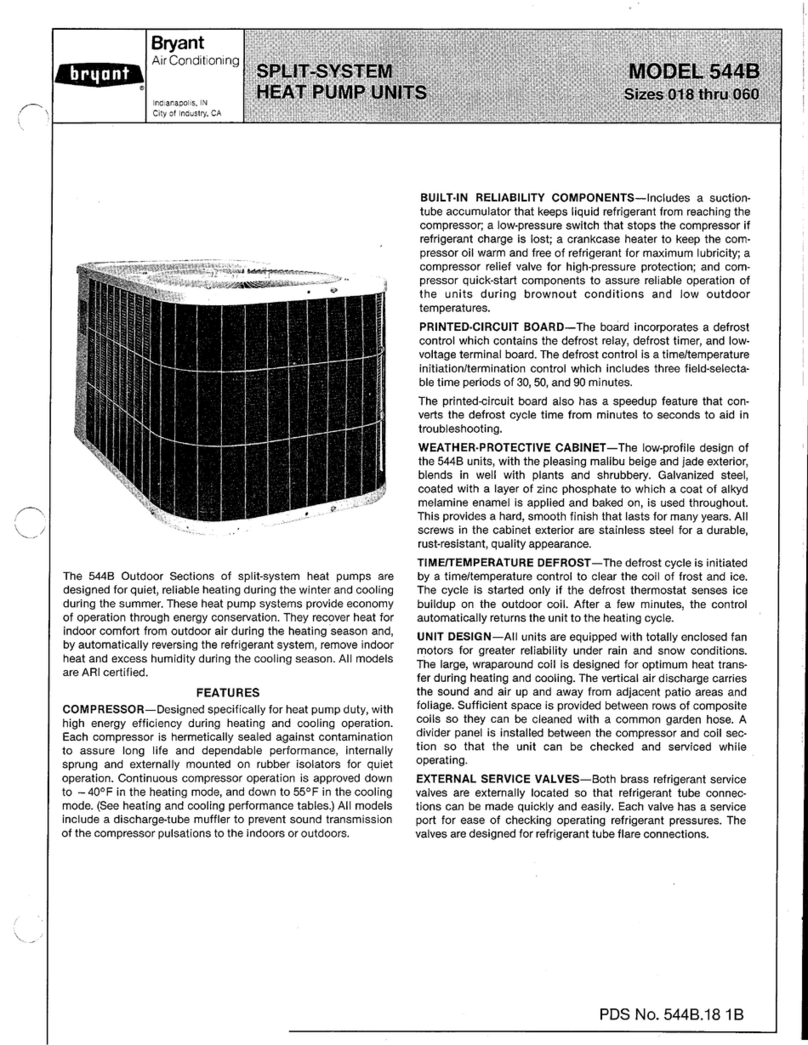
1. Shut off all power to unit.
2. Remove all charge from system.
3. Remove valve using a tubing cutter.
4. Install new valve (wrap valve with a wet rag to prevent
overheating while brazing).
5. After valve is brazed in, check for leaks.
6. Evacuate and charge system. Operate system in both modes
several times to be sure valve functions properly.
Discharge Temperature Switch (DTS) — Switch,
used only on unit sizes 030 and 036 with scroll compressors,
senses high discharge temperature levels reached under ex-
treme operating conditions (low charge or low evaporator
airflow). Approximate cut-in and cutout temperatures are
290 F and 140 F, respectively.
Thermistors — The outdoor coil temperature ther-
mistor and outdoor air temperature thermistor are used only
with duct-free split systems that use a microprocessor con-
trol. Refer to separate installation instructions for models 40QA
and 40QY indoor units.
Time-Delay Relay (TDR1) — Relay, used only on
unit sizes 030 and 036 with scroll compressors, ensures that
compressor comes to complete stop before restarting.
Time-Delay (TDR2) — Relay prevents nuisance trip-
ping of low-pressure switch during system switchover after
defrost.
Compressor Lockout Switch — Units with com-
pressor lockout protective device shut down on any safety
trip. Determine reason for safety trip. To restart, turn the ther-
mostat to OFF position and then to COOL position.
Refrigerant Charging
To prevent personal injury, wear safety glasses and gloves
when handling refrigerant. Do not overcharge system
— this can cause compressor flooding.
Service valves must be fully backseated to close service
port. There is no Schrader valve at the service port, and
failure to backseat the valve could result in loss of sys-
tem charge or personal injury.
NOTE: Do not vent or depressurize unit refrigerant to at-
mosphere. Remove and reclaim refrigerant following ac-
cepted practices.
To check and adjust charge during cooling season, use
Tables 3 and 4 and the following procedure:
1. Operate unit a minimum of 15 minutes before checking
charge.
2. Measure suction pressure by attaching a gage to suction
valve service port.
3. Measure suction line temperature by attaching a service
thermometer to unit suction line near suction valve. In-
sulate thermometer for accurate readings.
4. Measure outdoor coil inlet-air dry bulb temperature with
a second thermometer.
5. Measure indoor coil inlet-air wet bulb temperature with
a sling psychrometer.
6. Refer to Table 3. Find air temperature entering outdoor
coil and wet-bulb temperature entering indoor coil. At
this intersection, note the superheat temperature.
7. Refer to Table 4. Find superheat temperature and suc-
tion pressure, and note suction line temperature. If unit
has higher suction line temperature than charted tem-
perature, add refrigerant until charted temperature is
reached.
8. If unit has lower suction line temperature than charted
temperature, remove and reclaim refrigerant until charted
temperature is reached.
9. If air temperature entering outdoor coil or pressure at
suction valve changes, charge to new suction line tem-
perature indicated on chart.
10. This procedure is independent of indoor air quality.
HeatingMode — To check system operation during heat-
ing cycle, use Table 5. This table indicates whether a correct
relationship exists between system operating pressure and
air temperatures entering indoor and outdoor units. In
heating mode, check should be made approximately 15 min-
utes after defrost with unit running with a clean coil.
Table 3 — Superheat Charging Table
(Superheat Entering Suction Service Valve)
OUTDOOR
TEMP INDOOR COIL ENTERING AIR (F) WB
50 52 54 56 58 60 62 64 66 68 70 72 74 76
55 9 12141720232629323537404245
60 7 10121518212427303335384043
65 * 6 10 13 16 19 21 24 27 30 33 36 38 41
70 * * 71013161921242730333639
75 * * * 6 9 12 15 18 21 24 28 31 34 37
80 ****581215182125283135
85 ******811151922263033
90 ******59131620242731
95 *******6101418222529
100 ********81215202327
105 ********5913172226
110 *********611152025
115 **********8141823
LEGEND
WB — Wet Bulb
*Do not attempt to charge system under these conditions or refrig-
erant slugging may occur.
Table 4 — Required Suction-Tube Temperature (F)
(Entering Suction Service Valve)
SUPERHEAT
TEMP (F) SUCTION PRESSURE AT SERVICE PORT (psig)
61.5 64.2 67.1 70.0 73.0 76.0 79.2 82.4 85.7
035 37 39 41 43 45 47 49 51
237 39 41 43 45 47 49 51 53
439 41 43 45 47 49 51 53 55
641 43 45 47 49 51 53 55 57
843 45 47 49 51 53 55 57 59
10 45 47 49 51 53 55 57 59 61
12 47 49 51 53 55 57 59 61 63
14 49 51 53 55 57 59 61 63 65
16 51 53 55 57 59 61 63 65 67
18 53 55 57 59 61 63 65 67 69
20 55 57 59 61 63 65 67 69 71
22 57 59 61 63 65 67 69 71 73
24 59 61 63 65 67 69 71 73 75
26 61 63 65 67 69 71 73 75 77
28 63 65 67 69 71 73 75 77 79
30 65 67 69 71 73 75 77 79 81
32 67 69 71 73 75 77 79 81 83
34 69 71 73 75 77 79 81 83 85
36 71 73 75 77 79 81 83 85 87
38 73 75 77 79 81 83 85 87 89
40 75 77 79 81 83 85 87 89 91
10


